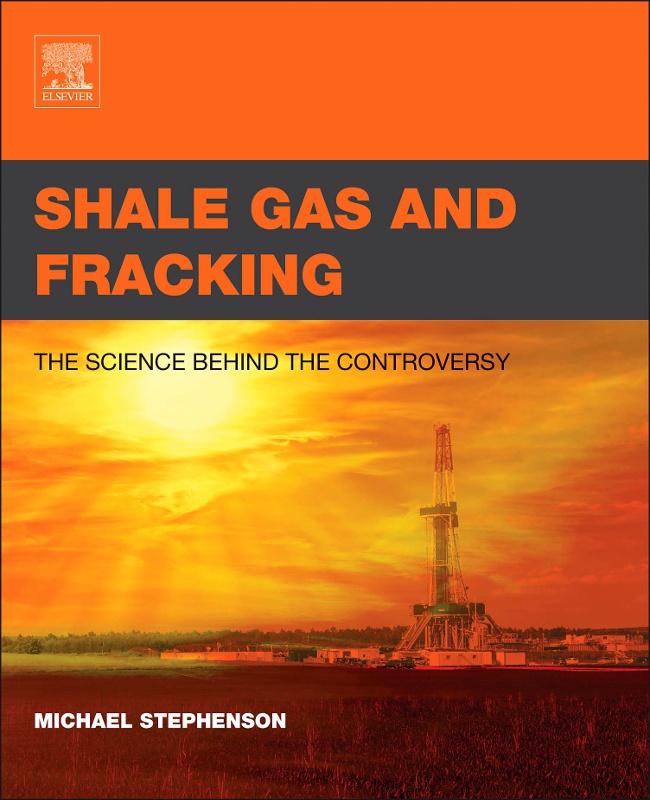Published in 2015, this 150-page book is an up-to-date review of this new energy source from a UK perspective.
With very little drilling for shale gas having happened in the UK, the author, an expert geoscientist with the British Geological Survey, assesses the past ten years’ explosive activity in North American shale exploration, drilling and production in order to try to define how the shale gas industry might progress on the other side of the Atlantic and elsewhere in the world.
Refreshingly written in plain English, we visit all the major points of interest, from environment of deposition to ‘flaming faucets’ and on to earthquakes, carbon emissions and social licence. All subjects are dealt with in such a balanced, even-handed fashion that it begs the question as to who the intended audience is – until the realisation hits that the author is trying to nail the truth in an industry renowned for its subterfuge.
This book is very reader-friendly, with each chapter having a list of contents, a synopsis, a number of key words and a bibliography.
Issues to be Resolved
 Shale Gas and Fracking: The Science Behind The Controversy Michael Stevenson. Elsevier, 2015Research using peer-reviewed scientific publications is a major source of the book’s information. The claim and counterclaim are dealt with honestly, but it is obvious that there are issues that are yet to be satisfactorily resolved, and the author implies that some of the current scientific answers may change with further studies. There is, for example, the highly publicised, methane-in-tap-water issue, where methane gas contamination has been scientifically measured to be six times higher within a kilometre of fracking operations in the state of Pennsylvania – but not in Arkansas. This topic remains open and merits further investigation.
Shale Gas and Fracking: The Science Behind The Controversy Michael Stevenson. Elsevier, 2015Research using peer-reviewed scientific publications is a major source of the book’s information. The claim and counterclaim are dealt with honestly, but it is obvious that there are issues that are yet to be satisfactorily resolved, and the author implies that some of the current scientific answers may change with further studies. There is, for example, the highly publicised, methane-in-tap-water issue, where methane gas contamination has been scientifically measured to be six times higher within a kilometre of fracking operations in the state of Pennsylvania – but not in Arkansas. This topic remains open and merits further investigation.
The fact that methane in water faucets is most prevalent in areas closest to fracked wells only in Pennsylvania is fascinating, but if it is caused by irresponsible cementing of casing, is this a state regulation problem rather than a drilling one? And should those famous tremors really be described as earthquakes?
Obviously new sources of hydrocarbons should not be discussed without consideration of the CO2 emissions resulting from their combustion, and the book dedicates a chapter to this. The question of whether shale gas is a lower polluter than coal gas is not straightforward when the holistic science is applied. And should shale gas be left in the ground or is it definitely an opportunity wedge in the CO2 stabilisation triangle? Another area for discussion.
Revisions to this first edition might emphasise that microseismic boreholes are shallow and therefore unlikely to cause permanent damage to the landscape and that methane emissions to the atmosphere during ‘flowback’ can be inexpensively cured with proven old-fashioned ‘separator’ equipment. Furthermore, the point that prolific gas potential in the Bowland shale under Manchester and Sheffield is unlikely to ever be exploited could be contrasted with the possibility of exploration in the more lightly populated areas between these two cities.
Environmental Questions
On the environmental front, the author talks of his experiences in Alberta where he describes the noise generated by fracking diesel pumps as ‘skull battering.’ But could that be considered as sort of okay in the middle of an unpopulated forest area, even if it goes on for days? And while modern soundproofed, electric powered drilling rigs can be quiet these days, can there ever be quiet high pressure pumps?
UK legislators recently ruled against shale exploration in areas of natural beauty and National Parks – but if not there then where could it be undertaken in an overcrowded country like the UK? This will be a massive challenge.
‘Social licence’ (a new term to this reviewer) describes the fact that despite the establishment of regulators to protect environments and the fact that exploration permits have been issued to explorers, people power has so far prevented any exploration drilling for shale gas in the UK in the past two years. The major task of changing public opinion is not dealt with in this book and probably requires a separate publication.
This honest attempt at describing the shale gas opportunity/threat scientifically should be read by all – and especially those living in cold climates who like to be warm in winter and those who like to be cool and dry when the heat and monsoon rains come along in summer.





